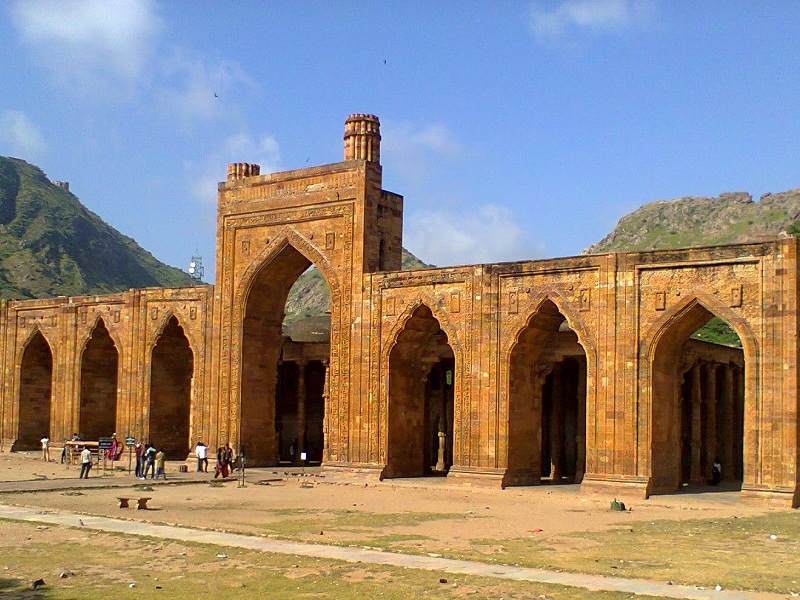- Private car and driver in Delhi / India
- +91-8447445445
- info@discoverindiabycar.com sugar.ankit@yahoo.com
 +91-9818434712
+91-9818434712
Ajmer
The city is also well known for its prestigious and outstanding Mayo College, which is exclusive for boys. The British built the school while they controlled India. The enormous Taragarh Fort, Adhai-Din Ka Jhonpra (an antique mosque constructed in just 2.5 days), the lovely Ana Sagar Lake, etc. are some of the city’s other attractions. As the only Lord Brahma temple in India, Pushkar is home to visitors who arrive by train at Ajmer. We may sum up by saying that Ajmer is a city rich in heritage and culture.
Climate
May is the hottest month of the year in Ajmer, with average high temperatures of 102°F and low temperatures of 81°F. From December 7 to February 15, the chilly season, which has an average daily high temperature below 77°F, lasts for 2.3 months. With an average low of 49°F and high of 71°F, January is the coldest month of the year in Ajmer.
Location
India’s northwest region includes Ajmer, which is encircled by the Aravali Mountains. It is located on the Taragarh Hill’s lower slopes in that range. The Nagapathar Range of the Aravali Mountain Ranges, which located to the northwest, shields it from desertification brought on by the Thar Desert.
History of Ajmer
The city of Ajmer was established in the seventh century by Raja Ajay Pal Chauhan. This city remained the major seat of the Chauhan dynasty up till the 12th century. Mohammed Ghauri then seized control of the city. Later, Ajmer also served as the Mughal rulers’ home. The city was afterwards ruled by the Scindia family in the 19th century before being turned over to the British. Continue reading this Ajmer city guide to learn more about this sacred place. To the southwest of Jaipur is the Rajasthani city of Ajmer Sharif. Travel and tourism to Ajmer are mostly known for its pilgrimage. Muslims and Hindus alike hold this city in the highest regard. Khwaja Moin-ud-din Chisti’s Dargah (memorial) is the most well-known pilgrimage site in the city. He was born in Persia and dedicated his entire life to helping the poor and oppressed populations.
The fort and other structures in Ajmer that are well-known throughout the state of Rajasthan are included in the sightseeing tour. They serve as illustrations of the stunning architecture for which the Indian state of Rajasthan is known worldwide. In addition, Ajmer offers a variety of additional things to see.
How to Travel Ajmer?
You can explore Ajmer city by private car and driver from Delhi with best driver from India. Discover India By car provide best tour packages for Ajmer. One of the best tour package for Ajmer by private car and driver is Heart of India Package by discover India by car.
Places to Visit in Ajmer

Dargah Sharif
Both Muslims and Hindus hold Ajmer in high regard as a sacred location.It is home to Khwaja Moinuddin Chishti’s mausoleum, a Sufi saint whose blessings are ardently sought by visitors to his dargah. The final burial site of the saint who passed away in 1235 is known as the “Dargah Sharif,” and it is located at the base of a desolate hill. The ill, the worried, and the childless flock here seeking a boon, a blessing, or just peace of mind. The saint’s marble domed mausoleum is India’s most significant shrine for Muslims and attracts a never-ending stream of tourists from all religions. According to legend, the saint granted the Mughal emperor Akbar’s request for a boon for an heir when he visited in the 16th century.
Adhai-din-ka-Jhonpra
The ruins of this mosque may be seen on the town’s outskirts, beyond the Dargah. Legend has it that it was built in two days (adhai din) in the year 1153, hence the name. Originally housed inside a temple, it served as a Sanskrit college. But Mohamed Ghouri took control of Ajmer in 1193 AD, and he added a seven-arched wall in front of the pillared hall to turn the structure into a mosque. The structure is a beautiful example of Indo-Islamic design. The arched screen with its minarets is notable, as are the many pillars. In just two and a half days (adhai-din), Mohammad Ghauri captured Ajmer and turned the structure into a mosque by constructing a seven-arched wall in front of the pillared hall, giving it its name.









